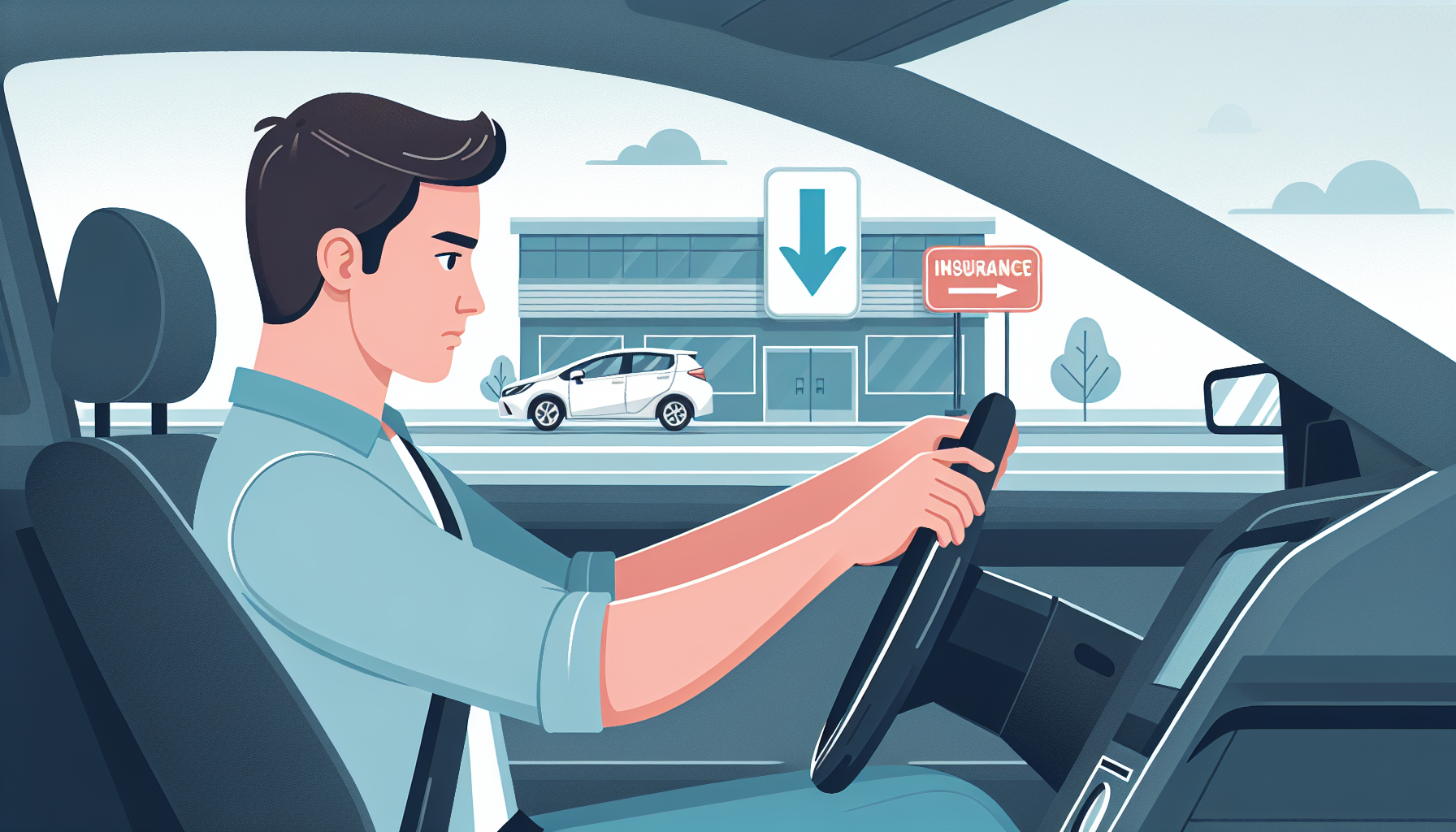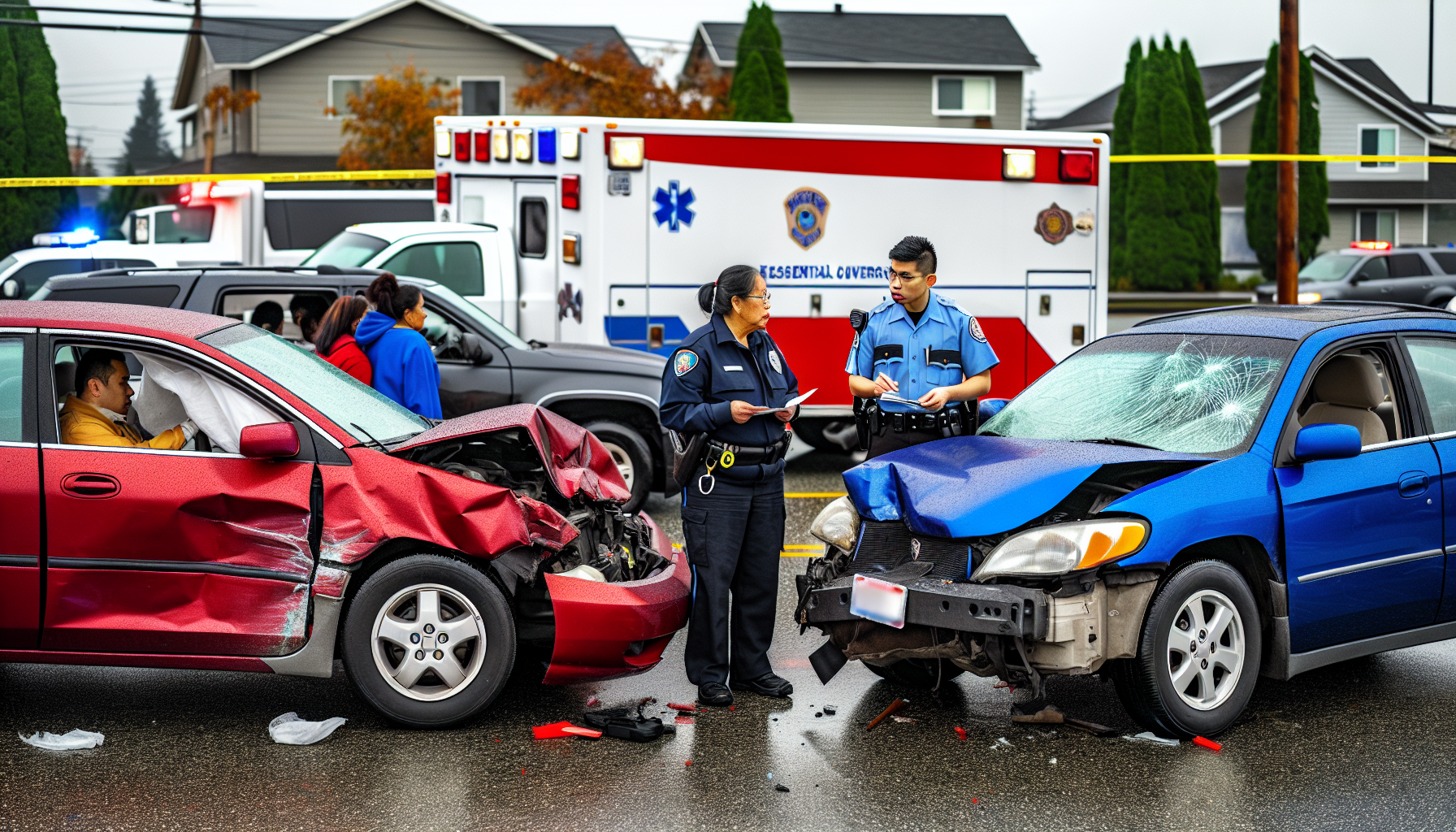How to Find Lowest Cost Auto Insurance: A Driver’s Guide to Save 50% Today

American drivers overpay an average of $859 each year on their auto insurance.
Regardless of your driving experience, finding the most affordable auto insurance can be a challenging task. Most drivers can cut their premiums by up to 50% if they take the right steps.
The best affordable car insurance requires more than picking the cheapest quote. Smart comparison shopping, understanding your coverage needs, and knowing your eligible discounts make all the difference. You’ll get access to the most affordable rates once you learn the techniques insurance agents use.
Let us share proven strategies to secure the lowest-cost car insurance while keeping your essential coverage intact. This detailed guide will help you become one of those savvy drivers who pay substantially less for their auto insurance. You’ll learn everything from the perfect timing of your purchase to rate negotiation tactics.
Understanding Your Auto Insurance Needs
The best way to get the lowest-cost auto insurance starts with knowing exactly what coverage we need. Let’s make this simple and break it down step by step.

Assessing Your Current Coverage
We must review our existing policy before hunting for affordable car insurance. Most states require minimum liability coverage that follows a “$25,000/$50,000” structure:
- $25,000 to cover bodily injury per person
- $50,000 total bodily injury coverage per accident
- $25,000 to cover property damage per accident
State minimums offer basic protection. Our research reveals that basic coverage might leave us exposed financially, since the average bodily injury claim reached $26,501 in 2023.
Determining Required vs Optional Coverage
Here’s a clear breakdown of everything you need to know about coverage types:
| Coverage Type | Requirement Status | Purpose |
|---|---|---|
| Liability | Required in most states | Covers others’ injuries and property damage |
| Personal Injury Protection | Required in some states | Covers medical expenses, whatever the fault |
| Uninsured Motorist | Required in some states | Protects against uninsured drivers |
| Comprehensive | Optional* | Covers theft, vandalism, and weather damage |
| Collision | Optional* | Covers accident-related vehicle damage |
Note: Lenders might require these even though they’re optional by law
Assessing Your Risk Profile
Insurance companies look at several factors that affect our premium rates based on our risk level. These key elements include:
-
Personal Information:
- Age and marital status
- Where you live
- Credit history
- Occupation
-
Driving-Related Factors:
- Your driving record (accidents, violations)
- Miles driven yearly
- Type of vehicle and its use
- Previous insurance coverage
Learning about our risk profile helps us choose the right coverage limits. To name just one example, see how someone with substantial assets should match their liability coverage to their net worth. We can figure this out with a simple formula: Value of home + value of cars + savings + investments – debt = coverage needed.
A detailed grasp of our insurance needs puts us in a great position to find affordable car insurance that still gives us proper protection. The smart move is to write down all these details before comparing providers. This ensures we get quotes that match what we really need.

Gathering Documentation for Better Rates
Getting the lowest-cost auto insurance depends on having the right paperwork. Let’s look at what documents you need to get the best rates.
Everything in Records to Collect
Insurance companies need several important documents to give accurate quotes. Here’s what you should prepare:
| Document Type | Purpose |
|---|---|
| Driver’s License | Identity verification |
| Social Security Card | Personal identification |
| Vehicle Registration | Car ownership proof |
| Current Insurance Policy | Coverage history |
| Bank Statements | Payment verification |
You should also collect documents for each household member who will be covered under the policy.
Proof of Safe Driving History
Getting your driving record is a vital step because insurance carriers usually check the past five years of driving history. You can ask for your driving record from your state’s Department of Motor Vehicles (DMV). The record has:
- Traffic violations and accidents
- License status information
- Driver control actions
- Residential history
Your clean driving record can lead to big savings, as safe driver discounts usually range from 10% to 30%.
Vehicle Safety Documentation
Without doubt, showing proof of your vehicle’s safety features can help you qualify for more discounts. You should:
- Check your vehicle’s user manual to find all safety features
- Keep receipts for any anti-theft devices you install
- Save certification documents for factory-installed safety equipment
You need these documents to get vehicle safety discounts:
- Vehicle registration documents
- Features checklist from manufacturer
- Installation receipts for aftermarket safety devices
Insurance providers give discounts for features like:
- Anti-lock brakes
- Airbags
- Stability control systems
- Anti-theft devices
You might also need these documents for certain discounts:
- School transcripts for good student discounts
- Military ID for service member discounts
- Defensive driving course completion certificates
- Organization membership cards for affiliation discounts
Comparing Insurance Providers Effectively
The next vital step after gathering our documentation is finding the best affordable car insurance by comparing insurance providers systematically. Let me show you how to review insurers the right way.
Researching Company Reputations
We started by looking at three different insurance providers. These trusted rating agencies help us get the full picture:
| Rating Agency | What They Evaluate |
|---|---|
| AM Best | Financial strength & claim payment history |
| J.D. Power | Customer satisfaction & service quality |
| State Insurance Division | Licensing & complaint records |
Trust plays a vital role in customer satisfaction. Research shows that customers who trust their insurer report satisfaction scores of 917 out of 1,000—that’s 426 points higher than those with low trust.
Using Online Comparison Tools
Online comparison platforms make our search easier. These tools give us several benefits:
- Instant quotes from multiple providers
- Standardized coverage comparisons
- Time-saving application process
- Direct rate comparisons
The core factors to think about while comparing are coverage options, rates, and claim processes. You should compare quotes every six months to keep your auto insurance costs low.
Reading Customer Reviews and Ratings
Customer experiences help us make better decisions. Recent data reveals big differences in customer satisfaction among providers:
- Only 15% of customers trust their insurers
- 90% of high-trust customers renew their policies
- 51% of customers fall into the low-trust category
Online reviews are a great way to get insights, but we need to look at other factors too. A complete evaluation has:
- Financial stability ratings
- State licensing verification
- Customer complaint records
- Coverage options
- Digital tools and accessibility
The secret lies in balancing all these factors instead of just looking at price. Research shows that customers’ trust scores average 735 out of 1,000 when they understand why rates change.
Maximizing Available Discounts
Getting the cheapest auto insurance becomes easier when you know how to get insurance discounts. Smart drivers can save up to 40% by using various discount programs.
Common Discount Categories
Insurance companies provide several main discount categories that help you get affordable car insurance. Here’s a detailed breakdown:
| Discount Type | Potential Savings |
|---|---|
| Safe Driver | 10-20% |
| Multi-Car | 10-25% |
| Bundling Policies | 5-25% |
| Vehicle Safety Features | 3-30% |
| Usage-Based | Up to 40% |
Qualification Requirements
Each discount type comes with specific eligibility rules. Our research shows these main qualifications:
- Safe Driver Requirements:
- Clean record without accidents or violations for 3-5 years
- Defensive driving course completion
- Proof of low annual mileage
Of course, students and military members can save even more. Students with a “B” average or higher save about 10%. Military personnel can qualify for 8-15% in savings.
Stacking Multiple Discounts
The best way to get affordable car insurance is by combining several discounts. To cite an instance, bundling home and auto insurance saves an average of 7% on auto policies. You can stack these discounts:
- Policy-Based Combinations:
- Multi-car discount (up to 25%)
- Bundled policies (5-25%)
- Paid-in-full discount (5-10%)
- Driver-Based Combinations:
- Safe driver (10-20%)
- Low mileage (varies by state)
- Professional affiliations (2-10%)
Insurance companies often limit the total discount percentage. State Farm offers multi-car discounts up to 20%. Progressive gives an average 12% discount for insuring multiple vehicles.
The right timing is vital to maximize your discounts. Check your eligibility every six months and keep proper documentation to get the lowest car insurance rates. Remote workers might qualify for extra discounts because they drive less.

Negotiating with Insurance Agents
Understanding how to negotiate with insurance agents is crucial for securing the best deal on auto insurance. Yes, it is amazing how much you can save on premiums when you know the right way to negotiate.
Preparation Strategies
Note that insurance agents negotiate with clients every day. To gain an advantage, it is essential to have a comprehensive preparation strategy.
| Preparation Element | Purpose |
|---|---|
| Policy Research | Understanding current coverage |
| Market Rates | Knowing competitive offerings |
| Documentation | Supporting our negotiation points |
| Desired Outcomes | Setting clear objectives |
We started by identifying three possible outcomes before starting negotiations: the best outcome, the acceptable outcome, and the walk-away point. This kind of preparation helps us stay confident during discussions.
Key Talking Points
The best negotiations happen through clear communication and showing value. Here are the main points to bring up during your conversation:
- Focus on value rather than price initially
- Present documentation of safe driving history
- Highlight vehicle safety features and maintenance
- Demonstrate loyalty if we’re existing customers
Insurance adjusters work better with us when we create an atmosphere of cooperation instead of confrontation. Building a good relationship often leads to better negotiations. Studies show that being transparent helps create better partnerships.
Counter-Offer Techniques
The right timing makes a big difference in successful negotiations. Here’s what to do when responding to offers:
- Never accept the first offer immediately
- Calculate our minimum acceptable settlement beforehand
- Present counter-offers 25-100% higher than our minimum acceptable amount
- Document all agreed-upon terms in writing
The same way, keeping things professional throughout the process helps. Research shows that showing honesty and integrity during negotiations encourages trust and credibility.
Along with these strategies, note that insurance rates mostly come from algorithms. Notwithstanding that, you can still negotiate effectively in these areas:
- Policy Bundling Options
- Deductible Adjustments
- Coverage Modifications
- Payment Terms
The most effective negotiations don’t prioritize winning at any costs. They’re about finding solutions that work for both sides—getting you affordable car insurance while meeting the insurer’s needs. Both parties should feel good about the outcome to build a lasting relationship.
Timing Your Insurance Purchase
The right timing can help you find the lowest-cost auto insurance. Auto insurance premiums shot up by 26% from 2023 to 2024. This makes smart timing a vital part of getting the best rates.
Best Times to Buy Coverage
We found December to be the best month to shop for affordable car insurance. Insurance companies often adjust their rates for the coming year. Life events can also give you better rates.
| Life Event | Potential Effect |
|---|---|
| Marriage | 7% average reduction |
| Moving | Rate varies by location |
| Retirement | Lower rates for reduced mileage |
| Birthday | Age-based rate adjustments |
| Home Purchase | Bundle discount opportunities |
You should start comparing rates 30–60 days before your current policy expires. This gives you time to:
- Get multiple quotes and assess them
- Look at coverage options
- Fill out paperwork
- Keep your coverage continuous
Seasonal Rate Variations
Seasonal factors significantly influence auto insurance rates. Tourist towns see insurance costs change based on:
-
Peak Travel Periods
- Higher accident risks during tourist seasons
- More theft and vandalism possibilities
- Roads get congested
-
Off-Peak Advantages
- Less traffic on roads
- Fewer claims filed
- Better rates available
These patterns let you adjust coverage seasonally to save money. If you use vehicles only in certain seasons, think about:
- Less comprehensive coverage during storage
- Simple protections all year
- Liability limits that match your usage
Policy Renewal Strategies
The best renewal strategy starts 60-90 days before your policy ends. The average annual premium is now $2,458. This makes smart renewal planning vital to getting affordable car insurance.
Your renewal checklist should have:
-
Documentation Review
- Current policy details
- Vehicle’s information (VIN, make, model)
- Updated personal information
-
Market Analysis
- Look at three or more insurance providers
- Check coverage matches
- Look up company reputation
-
Timing Considerations
- When policy expires
- How rates change with seasons
- Changes from life events
Note that auto insurance policies usually last six or twelve months. You should check your coverage right after big life changes like moving or adding new drivers.
Rising insurance costs make keeping continuous coverage essential. Yearly car insurance now costs more than $2,000. This shows why timing matters so much in insurance decisions.
Your renewal strategy should also include:
- A list of all safety features
- Current mileage records
- Recent credit reports
- A clean driving record
Conclusion
Smart research and planning help drivers find affordable auto insurance. Our complete analysis shows how understanding coverage needs, proper documentation, and effective provider comparison can lead to big savings.
Many drivers miss out on money-saving opportunities because they rush through the insurance buying process. The right knowledge about discounts, negotiation techniques, and optimal purchase timing can help cut premiums while you retain control of quality coverage.
Note that the best rates need regular monitoring and updates. You can keep premiums low by checking rates every six months and maintaining clean driving records. Stay alert to life changes that affect insurance costs. On top of that, you can maximize savings by stacking multiple discounts and timing purchases well.
Your journey to affordable auto insurance begins today. These proven strategies and proper documentation will put you among savvy drivers who pay nowhere near as much for their coverage. You’ll still enjoy complete protection on the road.
Frequently Asked Questions
Who normally has the cheapest car insurance?
State Farm, GEICO, and USAA are the top contenders for the cheapest car insurance for most drivers. They offer competitive rates for full coverage, teens, seniors, drivers with accidents, DUIs, bad credit, and tickets.
What is the cheapest full-coverage insurance per month?
The cheapest full coverage car insurance is available from USAA, Erie, Nationwide, Geico, and Auto-Owners, with rates as low as $88 per month. USAA is typically the most affordable provider of full coverage car insurance, offering plans as low as $82 per month.
Who is cheaper, Geico or Progressive?
On average, Geico offers lower auto insurance rates than Progressive, making it the cheaper option for most drivers. Geico also provides a wider range of discounts than Progressive, which could further reduce your cost. However, Progressive may offer more competitive prices to higher-risk drivers.
How can I find affordable auto insurance?
Unlock the secrets to low-cost insurance, implement strategies to reduce rates, secure essential coverage, customize your policy for maximum savings, and fast-track your way to affordable auto insurance—you can do it!
What types of coverage are essential for auto insurance?
Auto insurance coverage is essential and should include liability protection, collision and comprehensive insurance, and uninsured/underinsured motorist coverage for optimal protection.




